
URI’s Black Rolled To NCAA’s 1st 10K Title
The NCAA’s first 10,000-meter race was held in 1948 at the Division I Outdoor Track & Field Championships at Memorial Stadium in Minneapolis.
It was by far the longest distance in meet history – previously the longest event was the 2-mile, with the exception of a 5000 meters being held once in 1936. The race was even longer than the 4-mile that the NCAA used for its cross country championships.
However, the distance wasn’t new to Robert Black of Rhode Island – two years earlier as a freshman he won the AAU national cross country title at 10K in 1946 after serving more than three years in the Army’s Air Forces in World War II.
And just a week before the NCAA 10K race Black set the American record for the similar 6 miles in 30:28.2.
In that inaugural NCAA 10K, Black proved himself the class of the field as he easily won in 32:13.5, finishing some 300 yards ahead of runner-up Vic Twomey of Illinois (33:01.6). The race was the only final held on Friday of the two-day meet and became a regular event on the NCAA schedule in 1963.
Later in the fall of 1948, Black won the first of his two NCAA cross country crowns, both over Wisconsin’s Don Gehrmann, who was the first winner of three-straight NCAA 1500/mile titles (1948-50).
Black is remembered as one of Rhode Island’s greatest distance runners. Though he graduated from Rhode Island State (now University of Rhode Island), the track & field facility at Rhode Island College is named Robert J. “Bob” Black Track for him, following a gift to RIC from Bob’s wife Sarah in his name after his death in 1998.
The NCAA and collegiate track & field will mark a momentous milestone in the spring of 2021 -- the 100th anniversary of the NCAA Championships and with that, the NCAA Track & Field Championships. In June 1921, the University of Chicago hosted the first track & field championships in NCAA history.
This point can’t be emphasized enough: Not only was the event the first for NCAA track & field, but the first championships for any sport under the sponsorship of the NCAA.
To celebrate, over each of the next 365 days, the U.S. Track & Field and Cross Country Coaches Association (USTFCCCA) will celebrate moments, student-athletes, and coaches that have made a century’s worth of championships special. From humble beginnings to important historical milestones to the modern-day, collegiate track & field has evolved with the American society.
The 2021 edition of the NCAA Division I Outdoor Track & Field Championships begin with preliminary round action on May 27-29 in Jacksonville, Fla., and College Station, Texas. The championships final site and culmination of the celebration is slated for June 9-12, 2021 at the newly rebuilt Hayward Field in Eugene, Ore.
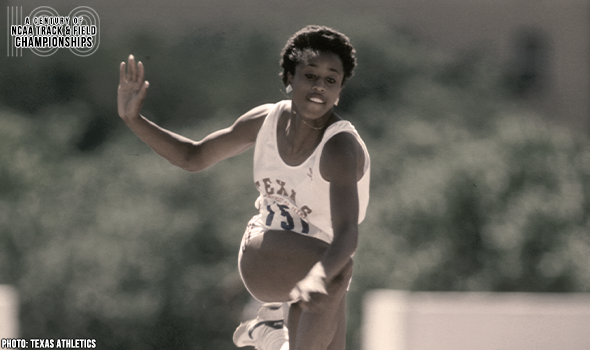
Texas’ Turner Soared To Triple Jump Greatness
Terri Turner was a two-time TJ champion at the NCAA DI Outdoor T&F Championships. When Turner won her 2nd title in 1986, she set an all-time world best of 13.66m (44-9¾).
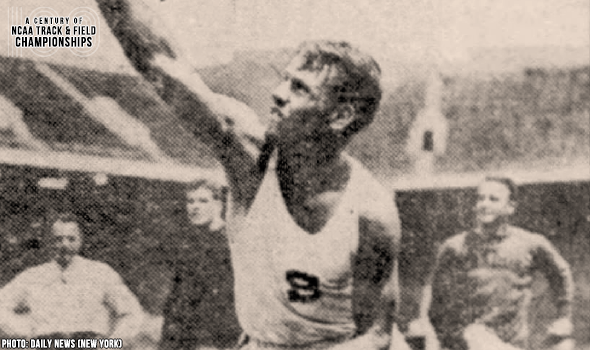
Stanford’s Rothert Starred In The Shot Put
Harlow Rothert won three consecutive shot put titles at the NCAA Outdoor T&F Championships between 1928 & 1930. He set meet records in both 1929 and 1930.

Indiana’s Kharun Set Javelin MR In 2003
Irina Kharun won the javelin title at the 2003 NCAA DI Outdoor T&F Championships with a meet record heave of 61.82m (202-10). It also helped her win by more than 30 feet!
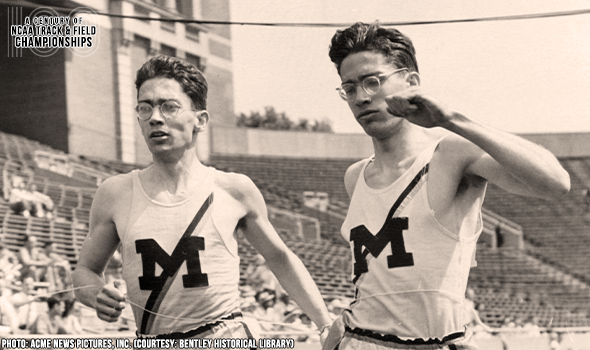
Hume Brothers Had Officials Seeing Double
Twins Robert & Ross Hume purposefully tied for the mile crown at the 1944 NCAA Outdoor Track & Field Championships. They tried again in 1945, but officials gave Ross the win.
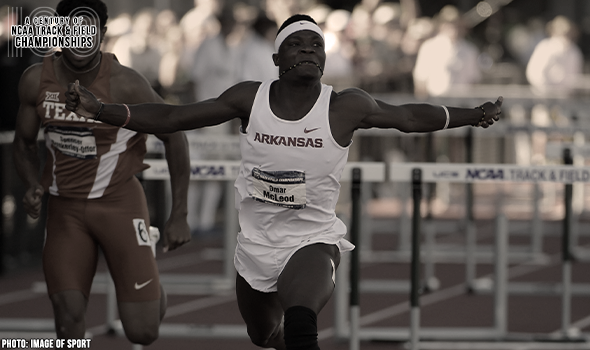
Woo Pig Sooie! McLeod Sizzled Track In 2015!
Omar McLeod clocked a sizzling 13.01 (+3.9) to win the 110HH at the 2015 NCAA DI Outdoor T&F Championships. Only one man had ever gone faster in meet history at the time.

Felicien Starred In The 100H At NCAAs
Perdita Felicien won back-to-back 100H titles at the NCAA Division I Outdoor T&F Championships in 2002 & 2003. She set a MR of 12.68 in the semifinals on the way to title No. 2.

Truly “Unbroken,” Zamperini Shined At NCAAs
Louis Zamperini set a meet record in the mile of 4:08.3 at the 1938 NCAA Outdoor T&F Championships. Zamperini, who also won the mile in 1939, saw his record last 15 years.

Hughes Soared To Three Consecutive HJ Titles
Tanya Hughes was the first woman to win three high jump titles at the NCAA Division I Outdoor T&F Championships. Hughes did so consecutively in 1991, 1992 & 1993.
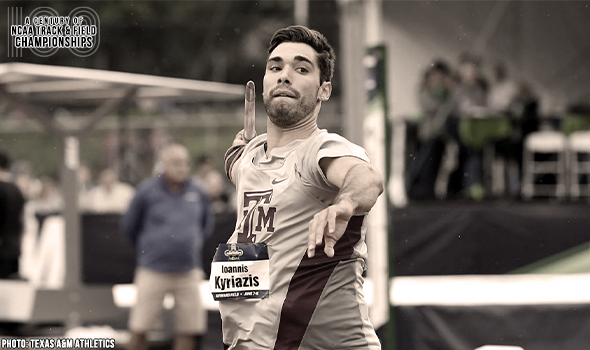
Kyriazis Made Point With Javelin In 2017
Ioannis Kyriazis set a meet record in the javelin of 82.58m (270-11) and won by more than 19 feet at the 2017 NCAA DI Outdoor T&F Championships.
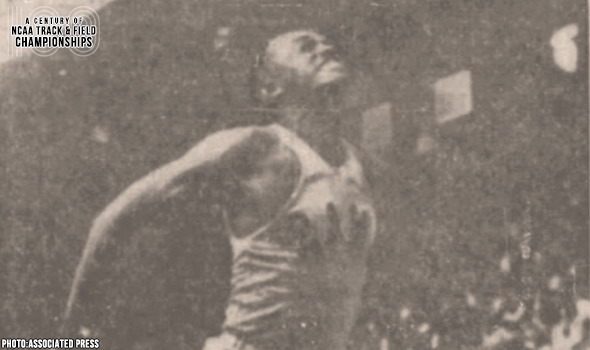
Sharpe Bounded To Meet History In 1956
Bill Sharpe became the first man to eclipse the 50-foot barrier in the triple jump at the NCAA DI Outdoor T&F Championships in 1956. Sharpe won with his 15.36m (50‑4¾) effort.

